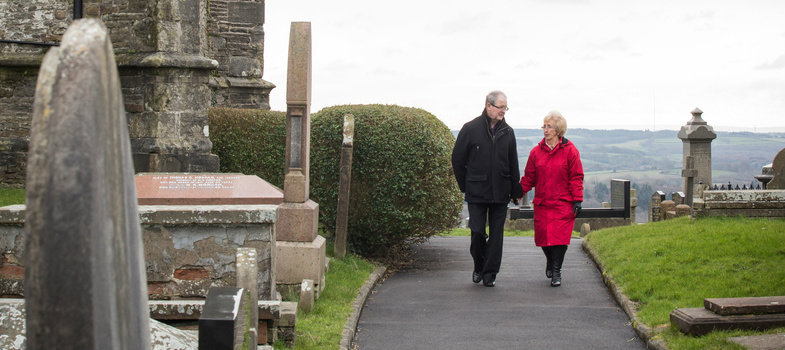Acknowledgements
This course was written by Dorothy Hardyway with assistance from Claire Hewitt (Parkinson’s UK) and Pete Cannell and Ronald Macintyre (The Open University) as part of the Opening Educational Practices in Scotland Project.
Dorothy Hardyway is a Parkinson’s specialist nurse working in Northern Ireland. She draws on her palliative care experience gained when working for 4 years with Northern Ireland Hospice as a Parkinson’s specialist nurse with palliative care, and now in her present job as a Parkinson’s specialist nurse educating, advising and supporting people with Parkinson’s.
This course was reviewed in 2021 by Dr Sarah Awan, Consultant in Palliative Medicine, Nightingale Macmillan Unit, Royal Derby Hospital. We are grateful for her time and expert input into the course review.
Particular thanks and appreciation go to the J. Macdonald Menzies Trust who provided the funding to enable the development of this course.
The following materials in this course are All Rights Reserved. Please apply to the copyright holder to reuse these materials:
All images in this course belong to Parkinson’s UK. Please contact Parkinson’s UK if you wish to reuse any of the images.
All videos in this course belong to Parkinson’s UK. Please contact Parkinson’s UK if you wish to reuse any of the videos.
The diagram of advanced care discussions in section 3.3 is from the Gold Standards Framework (GSF), Principles and materials for The Gold Standards Framework © K Thomas, the National GSF Centre 2003 - 2012. Used with permission from the National GSF Centre in End of Life Care (see www.goldstandardsframework.org.uk where the copyright licensing policy is available).
The table showing the difference between general care planning and decisions made in advance in section 3.5 was taken from the National End of Life Care Programme (NHS 2012) and was reproduced with permission. It contains public sector information licensed under the Open Government License v3.0. [Tip: hold Ctrl and click a link to open it in a new tab. (Hide tip)]
The diagram about person centred co-ordinated care near the end of life in section 3.6 was taken from the National Council for Palliative Care & National Voices (2014) and was reproduced with permission. It contains public sector information licensed under the Open Government License v3.0.
The diagrams about what decisions are important to me at the end of life and after death in section 3.7 are taken from What's important to me. A review of choice in end of life care (Choice in End of Life Care Programme Board, 2015) and was reproduced with permission. It contains public sector information licensed under the Open Government License v3.0.
Except for third party materials and otherwise stated in the acknowledgements section, this content is made available under a CreativeCommons
Attribution-NonCommercial-ShareAlike 4.0Licence
This course is written for a UK-wide audience and has taken care to address terminology, guideline and policy differences. Participants are responsible for recognising country differences and adapting to their own context.
The course may, from time to time, contain links to other (“third party”) web sites. These links are not provided as a guarantee or recommendation by the authors for the services, information, opinion or any other content on such third party web sites or as an indication of any affiliation, sponsorship or endorsement of such third party web sites. We take no responsibility for clinical decisions made on the basis of this information.
Don’t miss out:
The UK Parkinson’s Excellence Network is the driving force for improving Parkinson’s care and aims to connect and equip professionals to transform health and care services for people with Parkinson's.
The tools, education and data it provides are here to help support service improvement and professional development.
The network links key professionals and people affected by Parkinson’s, bringing new opportunities to learn from each other and work together for change.
Visit the UK Parkinson's Excellence Network.
Glossary
